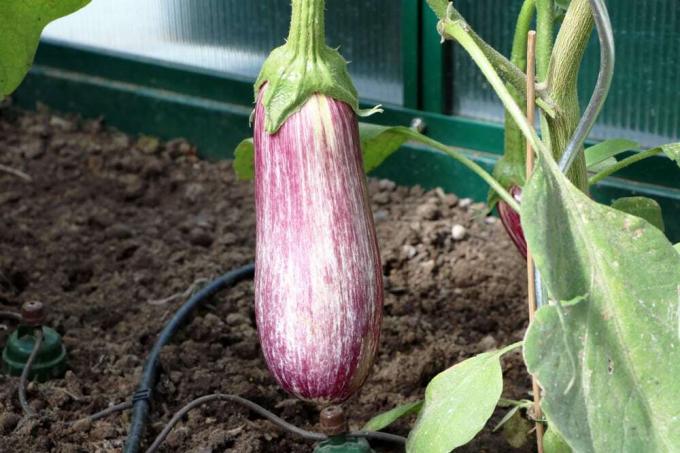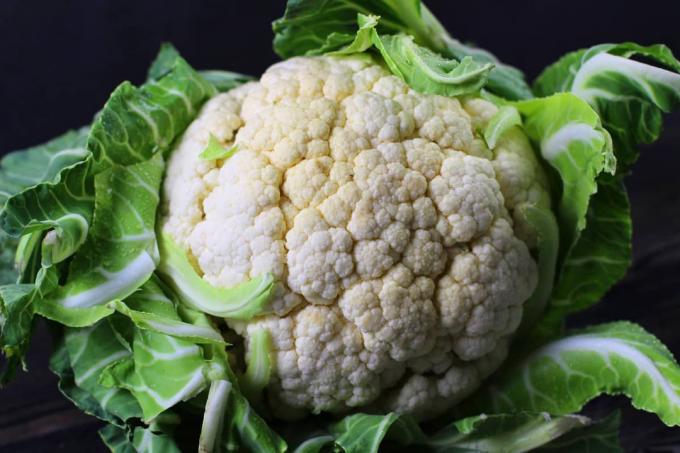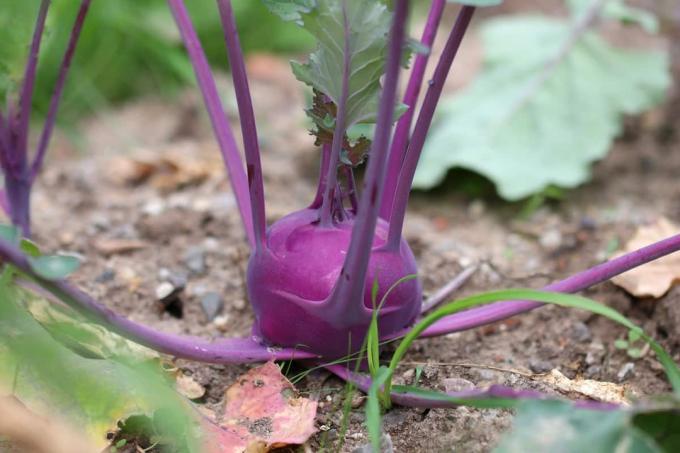

Table of contents
- plant eggplants
- Overwinter eggplants
- Special egg plants on the balcony or in the conservatory
egg plants or Eggplants are key ingredients in many delicious Mediterranean dishes. But they also taste very simple, i.e. simply cut into pieces and fried in a pan with a little salt, pepper and butter. In any case, it is worth trying out the cultivation of eggplants, because the productive plant is actually quite easy to care for:
plant eggplants
You can your egg plants obtained from seeds that you sow in March and prick out a few centimeters in size. Then the small aubergines can be placed individually in pots with nutrient-rich soil and grown in the greenhouse or in a bright window. The optimal rearing temperature for the warmth-hungry plants is 25 °C. Towards the end of May, the eggplants are then planted outside together with the ball.
Early young plants are also offered at this time
Garden can be planted. The individual rows should be about 60 cm apart, the distance between the individual plants should also be at least 50 cm. Since the eggplants really need warmth, as I said, it is best to plant them outdoors in black mulch foil, which increases the soil temperature. If the young plants are covered with fleece for the first few weeks, they will grow and develop better.If you have the opportunity, you can also grow the egg plants under so-called floating windows, i.e. under laid glass windows. For this purpose, small eggplant plants are placed in a bed warmed under the window and are allowed to grow under this protection. When they get taller, around mid-summer, the windows need to be raised by e.g. B. a plant pot shelter or something else with a suitable height. If you plan to carry out such cultures more often, you can also build a real lattice frame around the bed, from which the heat windows are then laid.
Eggplants need plenty of water in the summer, and they are very nutrient hungry. They want to be fertilized with compost or every week universal fertilizer received in the irrigation water. You have the choice of growing your aubergines with a single shoot, like tomatoes, i.e. removing all side shoots, or letting them grow as a bush.

However, this only makes a decisive difference if you grow the eggplants in the greenhouse, then you will either have a few large fruits or several, but smaller ones. When reared outdoors, the plant only has the strength to ripen about five fruits anyway. They can also develop on the bush, the remaining fruit buds are simply pinched away. That is why the shrub-like growth is usually chosen outdoors, which makes less work than the cultivation of a shoot.
You can secure or increase by gently shaking the plants occasionally at midday when flowers have appeared. This will then actively help the egg plant with pollination. From the beginning of August, however, you should remove all blossoms, as the resulting fruits would no longer ripen in our climate. This shrub should definitely be tied to a stake outdoors to make the plant more stable. In the greenhouse, the aubergines can be tied with strings so that they cannot become unbalanced as they continue to grow.
The warmth-loving plant usually only brings a really rich harvest when reared in the greenhouse. In any case, you have to make sure that every fruit on the plant ripens, the aubergines only have an optimal harvest quality in a very short time. You have to take a good look and notice when the fruit skin is completely colored and shiny. Then you only have a day or two to harvest, if you let the aubergine fruit hang longer, it will become dull and get a very soft inside. This is not only a visual impression, the aroma also suffers with increasing maturity.
Overwinter eggplants
Basically, the eggplants are perennial, but hardly anyone bothers to overwinter the aubergines. It's similar to tomatoes: They are perennials, of course, but they always grow on the edge of their strength in our cold and poorly lit areas. If they survive the winter, which is even more inhospitable for them, they usually wither badly when they spring and then hardly bear any fruit in the following year.
That's why aubergines are usually grown as annuals here, as well tomatoes and peppers. However, you can take seeds from this year's generation and grow them the following year. To do this, you would have to let a fruit overripe and sort out the seeds from the spongy pulp, which should then be dried and stored dry until spring.
If you would like to overwinter your eggplants, they must be brought indoors in the fall. They are then pruned back and overwintered in a bright room that is not too cool or in a heated greenhouse (over 10 °C). However, the winter here is really not the right climate for a plant of this origin, therefore, you will likely have to contend with pests that will ravage the weakened plant mugged. It also takes quite a long time for the egg plants to get going again in spring, if you have seeded egg plants at the same time, they can usually keep up in development.
Special egg plants on the balcony or in the conservatory
However, there are special aubergine varieties that set many smaller fruits and are therefore excellent in the bucket can be drawn. With these plants, it is definitely worth trying to overwinter them, you can put a bucket in the house quite quickly. These eggplants also need a bright location with at least 10 °C and can then be used for several years.
 garden editorial
garden editorial I write about everything that interests me in my garden.
Learn more about vegetables

Mixed culture: 9 good neighbors of Swiss chard
The cultivation of Swiss chard in the home garden is uncomplicated and the harvest rewards are considerable. Varieties with colorful stems are also real eye-catchers in the bed. Carefully selected neighboring plants contribute to healthy growth.

Mixed culture: 17 good neighbors of beetroot
Because of its uncomplicated nature, beetroot is often cultivated. To optimize the health and taste of root vegetables, it is advisable to plant good neighbors. These have a positive effect on growth and protect against pests and fungi.

12 good neighbors of cucumbers | mixed culture
Cucumbers are popular vegetables for mixed crops with other crops. Root vegetables are just as suitable as lettuce as plant neighbors. Plantings with kitchen herbs are attractive because they enrich the garden and kitchen. Flowering ornamental plants also improve growth.

10 good neighbors for onions | mixed culture
Good neighbors for onions or a beneficial mixed culture is not only natural, but It also reduces the maintenance effort, can keep pests away and the risk of disease to reduce. You can find out which plants are suitable here.

Mixed culture: 14 good neighbors of cauliflower
Cauliflower, also known as cheese or cauliflower, is a cultivated form of cabbage. It can be prepared in a variety of ways and can be eaten raw or cooked. Cultivation is not unproblematic, because cauliflower is very demanding.

Mixed culture: 11 good neighbors of kohlrabi
The kohlrabi likes to root next to many other plants, so a mixed culture with it is easy to implement. Not only does it grow splendidly and healthily. Even the scarce space in a house garden can be used optimally. Which are his favourites?
